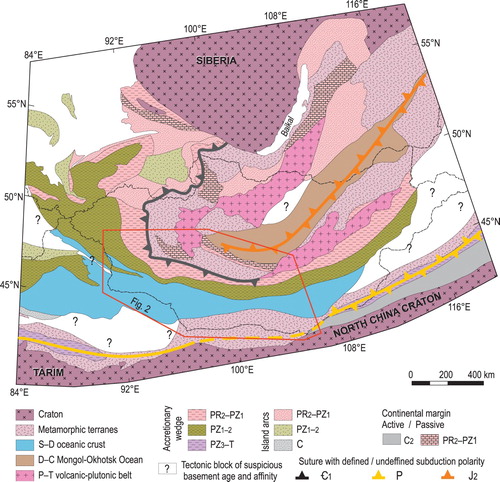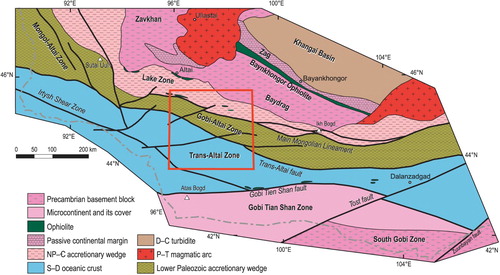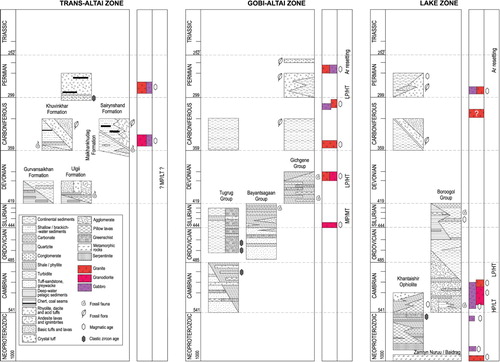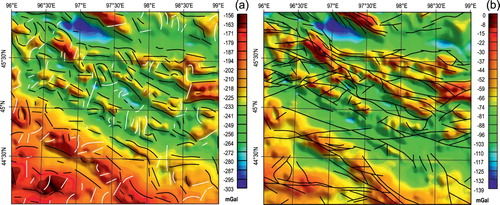Figures & data
Figure 1. Geological position of Mongolia in the frame of CAOB, according to CitationNguyen et al. (2018), modified from CitationBuriánek et al. (2017).

Figure 2. Position of map sheet L-47-V within geotectonic map of SW Mongolia (modified from CitationNguyen et al., 2018).

Figure 3. Lithostratigraphic scheme of the Trans-Altai, Gobi-Altai, and Lake zones. Metamorphism: H, M, L – high, medium, low; P, T – pressure, temperature.

Figure 4. (a) Bouguer gravity anomaly map with interpreted lineaments: black lines are the NW–SE lineaments while white lines represent the NE–SW lineaments and (b) Isostatic residual gravity anomaly map with the superimposed faults depicted from the geological map.

